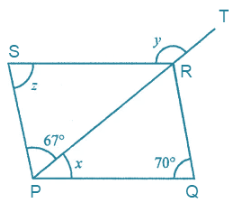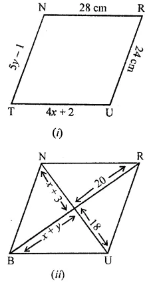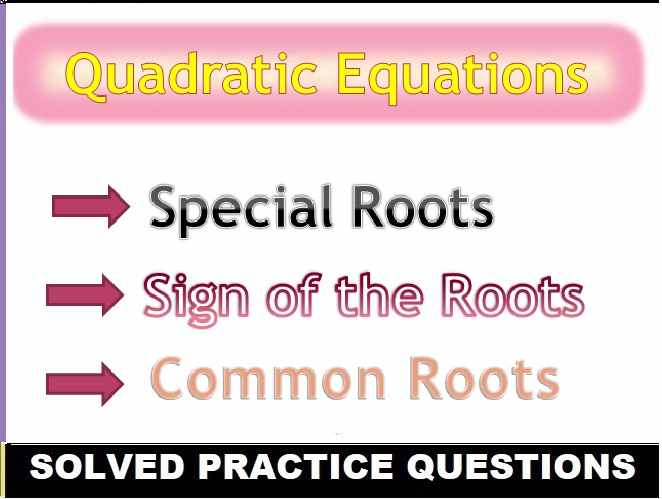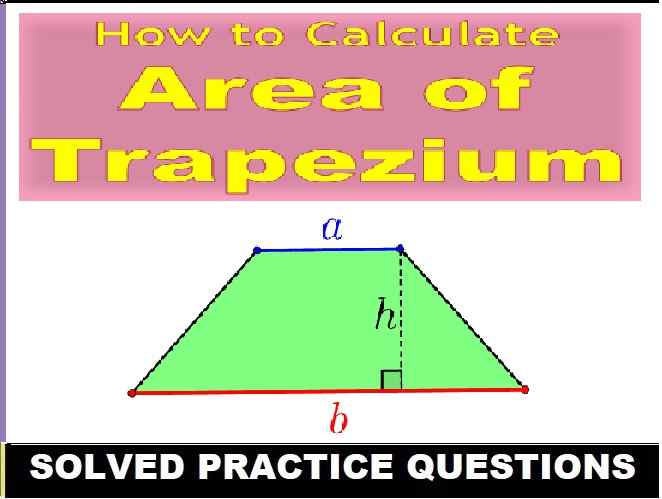ML Aggarwal Quadrilaterals Shapes Exe-13.2 Class 8 ICSE Ch-13 Maths Solutions. We Provide Step by Step Answer of Exe-13.2 Questions for Quadrilaterals Shapes as council prescribe guideline for upcoming board exam. Visit official Website CISCE for detail information about ICSE Board Class-8.
ML Aggarwal Quadrilaterals Shapes Exe-13.2 Class 8 ICSE Maths Solutions
| Board | ICSE |
| Publications | Avichal Publishig Company (APC) |
| Subject | Maths |
| Class | 8th |
| Chapter-13 | Quadrilaterals Shapes |
| Writer | ML Aggarwal |
| Book Name | Understanding |
| Topics | Solution of Exe-13.2 Questions |
| Edition | 2023-2024 |
Quadrilaterals Shapes Exe-13.2
ML Aggarwal Class 8 ICSE Maths Solutions
Page-237
Question 1. In the given figure, ABCD is a parallelogram. Complete each statement along with the definition or property used.
(i) AD = ………..
(ii) DC = ………..
(iii) ∠DCB = ………..
(iv) ∠ADC = ………..
(v) ∠DAB = ………..
(vi) OC = ………..
(vii) OB = ………..
(viii) m∠DAB + m∠CDA = ………..

Answer:
In paralleloram ABCD
(i) AD = 6 cm (Opposite sides of parallelogram)
(ii) DC = 9 cm (Opposite sides of parallelogram)
(iii) ∠DCB = 60° (∵ ∠DCB + ∠CBA = 180°)
(iv) ∠ADC = ∠ABC = 120°
(v) ∠DAB = ∠DCB = 60°
(vi) OC = AO = 7 cm
(vii) OB = OD = 5 cm
(viii) m∠DAB + m∠CDA = 180°
Quadrilaterals Shapes Exe-13.2
ML Aggarwal Class 8 ICSE Maths Solutions
Page-238
Question 2. Consider the following parallelograms. Find the values of x, y, z in each.

Answer:
(i)

From the figure, ∠POQ = 120o
Sum of angles linear pair is equal to 180o
So, ∠POQ + ∠PON = 180o
120o + ∠PON = 180o
∠PON = 180o – 120o
∠PON = 60o
∠M = ∠O = 60o … [because opposite angles of parallelogram are equal]
∠POQ = ∠MNO
120o = 120o … [because corresponding angels are equal]
y = 120o
z = y
120o = 120o
Hence, x = 60o, y = 120o and z = 120o
(ii)

From the figure, it is given that ∠PQO = 100o, ∠OMN = 30o, ∠PMO =40o.
Then, ∠NOM = ∠OMP … [because alternate angles are equal]
So, z = 40o
Now, ∠NMO = ∠POM … [because alternate angles are equal]
So, ∠NMO = a = 30o
Consider the triangle PQO,
Sum of measures of interior angles of triangle is equal to 180o.
∠P + ∠Q + ∠O = 180o
x + 100o + 30o = 180o
x + 130o = 180o
x = 180o – 130o
x = 50o
Then, exterior angle ∠OQP = y + z
100o = y + 40o
By transposing we get,
y = 100o – 40o
y = 60o
Hence, the value of x = 50o, y = 60o and z = 40o.
(iii)

∠SPR = ∠PRQ
35o = 35o … [because alternate angles are equal]
Now consider the triangle PQR,
Sum of measures of interior angles of triangle is equal to 180o.
∠RPQ + ∠PQR + ∠PRQ = 180o
z + 120o + 35o = 180o
z + 155o = 180o
z = 180o – 155o
z = 25o
Then, ∠QPR = ∠PRQ
Z = x
25o = 25o … [because alternate angles are equal]
in parallelogram opposite angles are equal.
So, ∠S = ∠Q
y = 120o
Hence, value of x = 25o, y = 120o and ∠z = 25o.
(iv)

From the figure, it is given that ∠SPR = 67o and ∠PQR = 70o
∠SPR = ∠PRQ
67o = 67o … [because alternate angles are equal]
Now, consider the triangle PQR
sum of measures of interior angles of triangle is equal to 180o.
∠RPQ + ∠PQR + ∠PRQ = 180o
x + 70o + 67o = 180o
x + 137o = 180o
x = 180o – 137o
x = 43o
Then, ∠PSR = ∠PQR
We know that, in parallelogram opposite angles are equal.
Z = 70o
Also we know that, exterior angle ∠SRT = ∠PSR + ∠SPR
y = 70o + 67o
y = 137o
Hence, value of x = 43o, y = 137o and z = 70o
Question 3. Two adjacent sides of a parallelogram are in the ratio 5 : 7. If the perimeter of parallelogram is 72 cm, find the length of its sides.
Answer:

Consider the parallelogram PQRS,
From the question it is given that, two adjacent sides of a parallelogram are in the ratio 5 : 7.
Perimeter of parallelogram = 72 cm
2(SP + RQ) = 72 cm
SP + RQ = 72/2
SP + RQ = 36 cm
Let us assume the length of side SP = 5y and RQ = 7y,
5y + 7y = 36
12y = 36
y = 36/12
y = 3
Therefore, SP = 5y = 5 × 3 = 15 cm
RQ = 7y = 7 × 3 = 21 cm
Question 4. The measure of two adjacent angles of a parallelogram are in the ratio 4 : 5. Find the measure of each angle of the parallelogram.
Answer:

Consider the parallelogram PQRS,
From the question it is given that, The measure of two adjacent angles of a parallelogram is in the ratio 4 : 5.
So, ∠P: ∠Q = 4: 5
Let us assume the ∠P = 4y and ∠Q = 5y.
∠P + ∠Q = 180o
4y + 5y = 180o
9y = 180o
y = 180o/9
y = 20o
Hence, ∠P = 4y = 4 × 20o = 80o and ∠Q = 5y = (5 × 20o) = 100o
In parallelogram opposite angles are equal,
So, ∠R = ∠P = 80o
∠S = ∠Q = 100o
Question 5. Can a quadrilateral ABCD be a parallelogram, give reasons in support of your answer.
(i) ∠A + ∠C= 180°?
(ii) AD = BC = 6 cm, AB = 5 cm, DC = 4.5 cm?
(iii) ∠B = 80°, ∠D = 70°?
(iv) ∠B + ∠C= 180°?
Answer:
From the question it is given that, quadrilateral ABCD can be a parallelogram.
In parallelogram opposite sides are equal and opposites angles are equal.

So, AB = DC and AD = BC also ∠A = ∠C and ∠B = ∠D.
(i) ∠A + ∠C= 180o
From the above condition it may be a parallelogram and may not be a parallelogram.
(ii) AD = BC = 6 cm, AB = 5 cm, DC = 4.5 cm
From the above dimension not able to form parallelogram.
Because AB ≠ DC
(iii) ∠B = 80o, ∠D = 70o
From the above dimension not able to form parallelogram.
Because ∠B ≠ ∠D
(iv) ∠B + ∠C= 180o
From the above condition it may be a parallelogram and may not be a parallelogram.
Question 6. In the following figures HOPE and ROPE are parallelograms. Find the measures of angles x, y and z. State the properties you use to find them.

Answer:
(i) In parallelogram HOPE, HO is produced to D

∠AOP + ∠POD = 180° (Linear pair)
∴ ∠AOP + 70°= 180°
∠AOP = 180°- 70°= 110°
But ∠AOP = ∠HEP (Opposite angles of a ||gm)
∠HEP = 110°
⇒ x = 110°
∠HPO = ∠EHP (Alternate angles)
∴ y = 40°
In ∆HOP, Ext. ∠POD = y + z
⇒ 70° = y + z
⇒ 70° = 40° + z
⇒ z = 70° – 40° = 30°
∴ x= 110°, y = 40°, z = 30°
(ii) In ||gm ROPE, RO is produced to D

∠POD = 80°, ∠EOP = 60°
∠P = ∠POD (Alternate angles)
∴ y = 80°
∠ROE + ∠EOP + ∠POD = 180° (Angles on one side of a line)
x + 60° + 80° = 180° ⇒ x + 140° = 180°
∴ x = 180°- 140° = 40°
z = x (Alternate angles)
∴ z = 40°
Hence, x = 40°, y = 80°, z = 40°
Quadrilaterals Shapes Exe-13.2
ML Aggarwal Class 8 ICSE Maths Solutions
Page-239
Question 7. In the given figure TURN and BURN are parallelograms. Find the measures of x and y (lengths are in cm).

Answer:
(i) Consider the parallelogram TURN
In parallelogram opposite sides are equal.
So, TU = RN
4x + 2 = 28
4x = 28 – 2
4x = 26
x = 26/4
x = 6.5 cm
and NT = RU
5y – 1 = 24
5y = 24 + 1
5y = 25
y = 25/5
y = 5
Hence, value of x = 6.5 cm and y = 5 cm.
(ii) Consider the parallelogram BURN,
BO = OR
x + y = 20 … [equation (i)]
UO = ON
x + 3 = 18
x = 18 – 3
x = 15
substitute the value of x in equation (i),
15 + y = 20
y = 20 – 15
y = 5
Hence, value of x = 15 and y = 5.
Question 8. In the following figure both ABCD and PQRS are parallelograms. Find the value of x.

Answer:
Two parallelograms ABCD and PQRS in which
∠A = 120° and ∠R = 50°
∠A + ∠B = 180° (Co-interior angles)
120° + ∠B = 180°

⇒ ∠B = 180°- 120° = 60°
∠P = ∠R (Opposite angles of a ||gm)
∠P = 50°
Now in ∆OPB,
∠POB + ∠P + ∠B = 180° (Angles of a triangle)
x + 50° + 60° = 180°
x + 110° = 180° ⇒ x = 180°- 110° = 70°
∴ x = 70°
Question 9. In the given figure, ABCD, is a parallelogram and diagonals intersect at O. Find :
(i) ∠CAD
(ii) ∠ACD
(iii) ∠ADC

Answer:
(i) ∠DBC = ∠BDA = 46° (alternate angles)
In ∆ AOD,
46° + 68° + ∠CAD = 180° (∵ ∠CAD = ∠OAD)
∠CAD = 180°- 114° = 66°
(ii) ∠AOD + ∠COD = 180° (straight angle)
∴ ∠COD= 180°- 68°= 112°
In ∆COD, 112° + 30° + ∠ACD = 180° (∵ ∠ACD = ∠OCD)
∠ACD = 180° – 112° – 30° = 38°
(iii) ∠ADC = 30° + 46° = 76° (∵ ∠ADC = ∠ADO + ∠ODC)
(ML Aggarwal Quadrilaterals Shapes Exe-13.2 Class 8 ICSE Maths)
Question 10. In the given figure, ABCD is a parallelogram. Perpendiculars DN and BP are drawn on diagonal AC. Prove that:
(i) ∆DCN ≅ ∆BAP
(ii) AN = CP

Answer:
In the given figure,
ABCD is a parallelogram AC is it’s one diagonal.
BP and DN are perpendiculars on AC.
To prove :
(i) ∆DCN ≅ ∆BAP
(ii) AN = CP
Proof: In ∆DCN and ∆BAP
DC=AB (Opposite sides of a ||gm)
∠N = ∠P (Each 90°)
∠DCN = ∠PAB (Alternate angle)
∴ ∆DCN ≅ ∆BAP (AAS axiom)
∴ NC = AP (c.p.c.t.)
Subtracting NP from both sides.
NC – NP = AP – NP
∴ AN = CP
Question 11. In the given figure, ABC is a triangle. Through A, B and C lines are drawn parallel to BC, CA and AB respectively, which forms a ∆PQR. Show that
2(AB + BC + CA) = PQ + QR + RP.

Answer:
From the figure it is given that,
Through A, B and C lines are drawn parallel to BC, CA and AB respectively.
We have to show that 2(AB + BC + CA) = PQ + QR + RP
Then, AB ∥ RC and AR ∥ CB
ABCR is a parallelogram.
So, AB = CR … [equation (i)]
CB = AR … [equation (ii)]
ABPC is a parallelogram.
AB ∥ CP and PB ∥ CA
AB = PC … [equation (iii)]
AC = PB … [equation (iv)]
ACBQ is a parallelogram
AC = BQ … [equation (v)]
AQ = BC … [equation (vi)]
By adding all the equation,
AB + AB + BC + BC + AC + AC = PB + PC + CR + AR + BQ +BC
2AB + 2BC + 2AC = PQ + QR + RP
By taking common
2(AB + BC + AC) = PQ + QR + RP
— End of Quadrilaterals Shapes Exe-13.2 Class 8 ICSE Maths Solutions :–
Return to : – ML Aggarwal Maths Solutions for ICSE Class -8
Thanks


